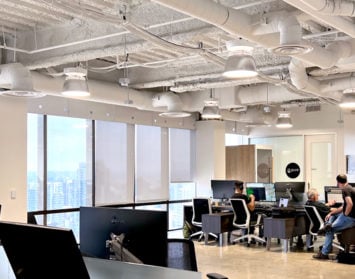As we wrap up Q1, it’s time for a look at the state of the market in my area of specialization: downtown San Diego. Here’s the scoop on leasing commercial space in Class A and Class B high rises, and a hint of what to expect in Q2 if you’re hunting for space in a low-rise building as well.
Class A High Rises
There has been a major shift in occupancy in Class A high rises in downtown San Diego over the past year. Far from the days of 18% to 20% vacancies, most Class A high rises downtown are operating at less than 10% vacancy rates. Suffice to say, there are very few suites available in these premier buildings, let alone a space that fits a tenant’s needs perfectly.
The spaces that are available are going fast, oftentimes with multiple parties bidding on each one. The best strategy for securing your top choice? Be decisive – and move quickly.
While this is great news for landlords, it’s not so great for companies that are looking for space downtown. Any time vacancy levels drop below 10%, a rule of thumb is that the market shifts favor away from tenants. Be sure to have a tenant representative working with you when it comes to negotiating one of these in-demand spaces, or you could get taken to the cleaners when it comes to your rate and terms.
Class B High Rises
Good news! There is plenty of space available in Class B buildings. While they may not be quite as luxurious as Class A buildings, there are some fantastic spaces to choose from, and you have the market on your side. With many Class B properties in the 50% to 60% occupancy levels, tenants are in a prime position to negotiate rates aggressively, get their dream build-out, and have flexibility in term, expansion options, operating expenses, and other key areas to look out for. Partner up with a broker to ensure that you maximize your leverage as a tenant.
Low-Rise Buildings
A common misconception in the office space arena is that the high-rise buildings are more expensive than the funky, less polished low-rises. In fact, the opposite is generally true! Over the past several years, there has been a shift in the market in that low-rise buildings are oftentimes more expensive than the high rises. The reason is simple: demand far outweighs supply.
These spaces are particularly attractive to tech companies, as they typically offer lots of natural light, high (and open) ceilings, exposed brick walls and/or concrete floors, and other historical characteristics that you just can’t find in Class A or Class B high rises (or that are very expensive to replicate). They are trendy, funky, and hip (and the fact that there aren’t very many of them makes them all the more desirable).
If you are lucky enough to find a hidden gem, make sure the space is truly what you want (read: it should be acceptable “as-is”). In effort to preserve the historical integrity of these low-rises, many landlords prohibit extensive build-outs, which could be a deal-breaker depending upon your requirements.
For questions on specific spaces currently available downtown in Class A and Class B high rises, and in low-rise buildings throughout San Diego, feel free to contact me at star@hughesmarino.com or (619) 238-2111.
Star Hughes-Gorup is executive vice president and director at Hughes Marino, a global corporate real estate advisory firm that exclusively represents tenants and buyers. Star is a key member of Hughes Marino’s brokerage team, where she specializes in tenant representation and building purchases. Star also makes frequent media appearances to speak on business issues from a millennial perspective, and regularly writes for Hughes Marino’s “Spaces We Love” blog. Contact Star at 1-844-662-6635, or star@hughesmarino.com.











